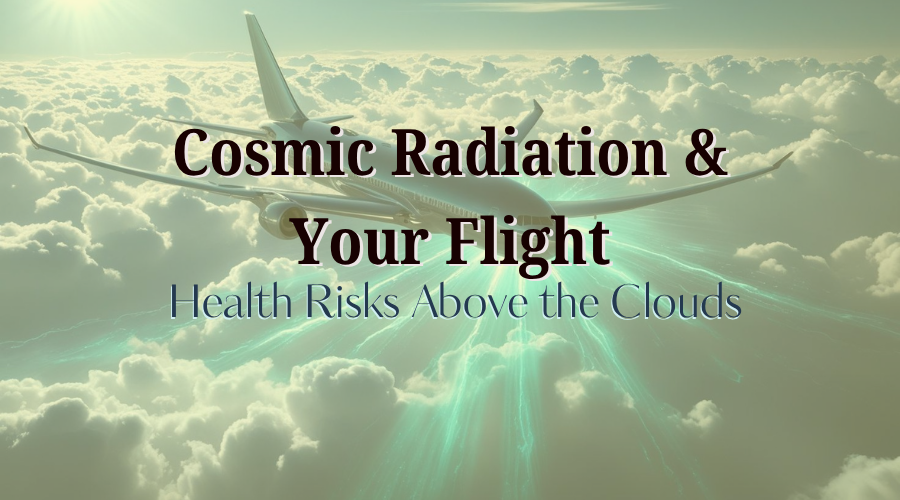
When travelling by a flight, we usually focus only on reaching the destination. Either we see the scene from the window or think about our food menu. But we rarely think about the invisible power of cosmic ionizing radiation that is travelling with us. For infrequent travellers, it's not harmful, but for pilots, flight attendants and regular passengers, it can be more risky.
In this blog, you'll learn about how cosmic radiation works, who gets affected by it and what precautions one can take.
Cosmic radiation originates in outer space, likely from distant stars, galaxies and the sun. When these high-energy particles get into the Earth's atmosphere, they create new particles that reach the altitude of flight and can easily enter the human body.
This radiation comes from two main sources during flights:
At ground level, the Earth's atmosphere and magnetic field protect us from radiation during air travel. We fly 30,000-40,000 feet up, so the atmosphere shield becomes thinner. As a result, passengers and crew members are easily affected by radiation.
The reason for the increased risk:
How much radiation do we receive during a flight? Here is a comparative view:
For comparison, a chest x-ray gives about 0.1 mSv while a CT scan may give up to 10 mSv. While a single flight is no cause of risk but this can be a big concern for those who are in the skies by profession.
Cosmic radiation is unseen, but it can cause long-term damage to the human body. The WHO (World Health organization) and IARC ( International Cancer Research Centre) classify ionizing radiation as a Group-1 Carcinogen. Which means it's scientifically proven that these radiations causes cancer in the human body.
This places cosmic radiation in the same risk category as harmful substances like tobacco products, asbestos, and arsenic, all of which are known to cause cellular damage and increase the risk of cancer.
Let's delve into the key health risks associated with prolonged or repeated exposure to cosmic ionizing radiation-
Ionizing radiation releases high-energy electrons, which can damage DNA. If the human body fails to repair this damage, then mutations in cells can occur and cause cancer.
Key Cancers Linked to Cosmic Radiation:
Long-term radiation not only causes cancer but also threatens the reproductive health of women and especially in the beginning period of pregnancy.
A study by NIOSH has shown that in the first three months of pregnancy, even 0.36 mSv radiation exposure increases the risk of miscarriage. During embryonic cell division and organ formation, radiation is very harmful.
From a combined research of NASA and NIOSH, it's been seen that if a pregnant crew member is on a flight during a Solar Particle Event could exceed the radiation limits recommended for pregnancy on that flight alone. This is dangerous because-
That's why pregnant flight attendants or those who travel frequently by air should monitor the space radiation levels, and even if needed, consider rescheduling flights or trip trading to avoid harmful exposure during pregnancy.
In recent research, it's been found that low-level long-term radiation can not only cause cancer but can also cause cardiovascular disease and affect blood vessels. It was once thought that the heart and blood vessels might not be very sensitive to this type of radiation. But now researchers are saying:
Though this part is still under research, these possibilities have been shown in studies conducted on pilots and astronauts.
Cosmic Radiation is not some kind of imagination; it's a scientifically proven reality, and for those who travel frequently by air, it's a sensitive health issue.
For those who travel occasionally, it's not that risky, but for pilots, cabin crew, and pregnant individuals, it's crucial to monitor, calculate, and manage exposure levels wherever possible. With the right knowledge, we can stay alert, make safer choices, advocate for better workplace protections and plan more responsibly for health.